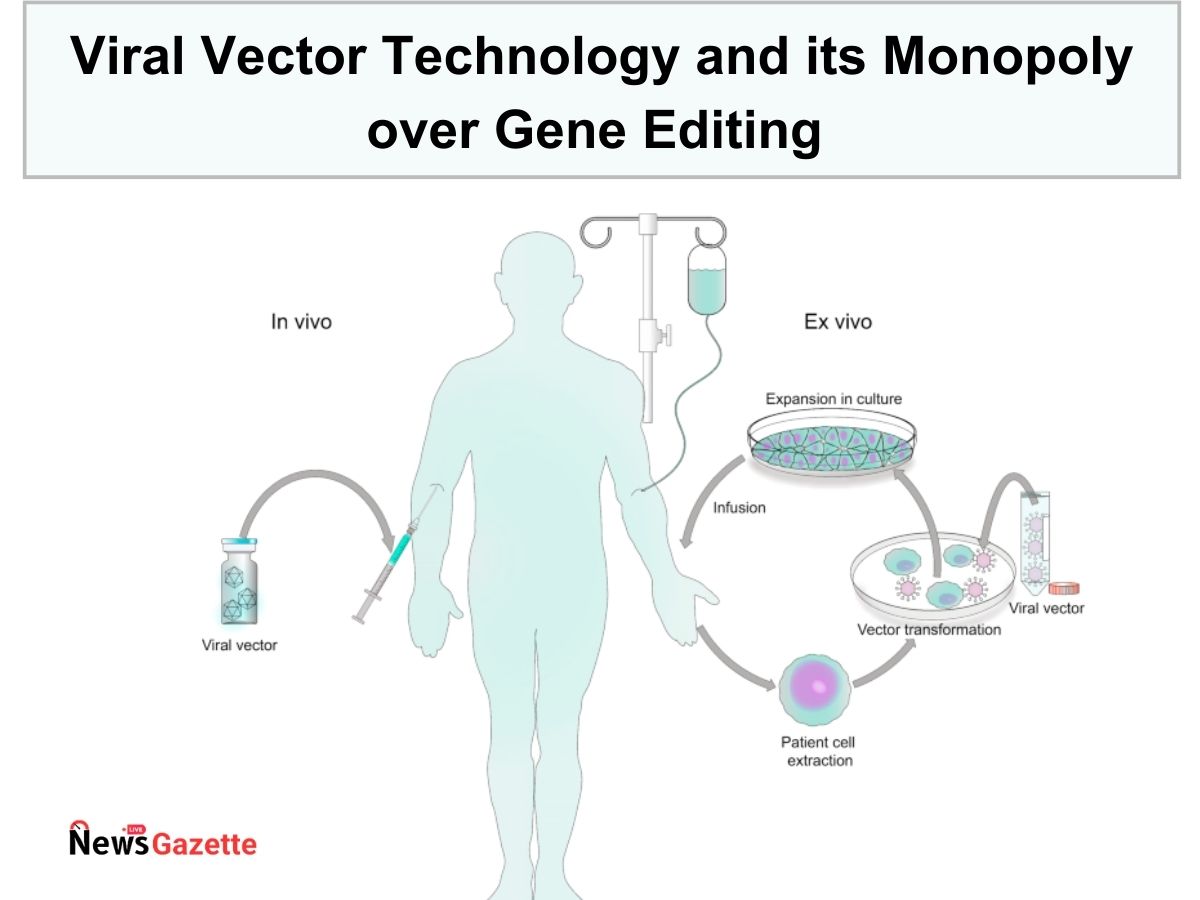
Viral Vector Technology and its Monopoly over Gene Editing
The concept of genetic manipulation has been around since the 1960s. Originally existing as a simple hypothesis, the discovery of viral vectors helped it gain significant momentum. With rising awareness of severe genetic conditions like muscular atrophy, hemophilia, familial blindness, etc., genetic intervention has been in demand. Add to that the global pandemic and recent outbreaks, the global viral vector market is expected to grow to 19% by 2028. Due to their wide range and sophisticated mechanisms, scientists successively diverted most of their resources toward vector-based research.
Exogenous material was used as both diagnostic and therapeutic aids. The Ex-vivo approach used the recipient’s cells as the carrier of the donor’s gene; In vivo technologies directly transfused the gene into the patient’s bloodstream. However, both methods require a vector or a guide molecule to perform its tasks. This led scientists to search for an ideal vector.
Viruses are one of the trickiest pathogens to deal with. Existing in a dominant or dead state; the virion will only act as a living organism attaching to a host cell. A robust outer envelope called capsid protects the genetic material from environmental damage, while the genes themselves are designed to use the host molecules to propagate further. These mechanisms allow the virion to survive against an organism’s natural defenses. Modern sciences enabled us to exploit these innate mechanisms.
The first successful use of a viral vector to be documented was in 1990. A girl born with severe combined immunodeficiency (SCID) had to continuously receive adenosine deaminase (ADA) enzyme infusions to survive. Later, scientists used a disabled virus to directly deliver the gene encoding ADA. The success of this case led to a surge in clinical trials focusing on viral vector-based gene therapies.
Read Also: Light Polymerizing Hydrogel: A Novel Candidate for Ocular Treatment
Nearly two decades after its initial recognition, viral vectors have dominated most of the genomic editing field. Some of the more established viral vector categories involve retrovirus (RV), adenovirus (AV), adeno-associated virus (AAV), lentivirus (LV), etc. Each has its unique structure, benefits, and drawbacks. Adenoviruses have a relatively large and well-characterized genome and, thus, are open to a wide range of genetic manipulation. These vectors have established themselves in R&D for HIV, Ebola, influenza, and tuberculosis-related therapies, with Bacillus Calmette Guerin (BCG) being the only clinically approved vaccine. However, the large size also contributes to instability and toxicity at high doses. Also, immunogenicity and the inability to transfect non-dividing cells severely inhibit its potential. AAV and LV vectors can easily transcend these limitations.
Additionally, the high AAV titer and long-term stability make it a good candidate for manufacturing. These vectors are largely involved in genetic research and gene therapy. RT vectors offer a manageable genome with stable integration into the host DNA. The viral vectors can cover almost every aspect of therapeutic gene manipulation.
In conclusion, the groundbreaking approach of viral vectors has greatly monopolized gene therapy. The explorative mentality of the scientific community has opened various additional avenues for viral vectors. With genes refined with a million years of evolution yet to be exploited, viral vectors show immense potential while tackling conditions ranging from acute to chronic. As researchers continue to unearth hidden gems of the viral genome, other traditional approaches have been put on the backburner.

Joshua Austin joined News Gazzte as a senior editor in 2023. Joshua is an automotive journalist who previously worked as an autonomous vehicle test engineer at Uber. He holds a bachelor’s degree in computer science, with a specialization in technical writing and journalism. Joshua’s enthusiasm lies in automotive technology and the evolution of transportation. He remains vigilant in tracking the most recent developments in electric vehicles, autonomous driving, and other emerging technologies.
